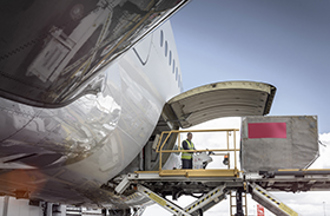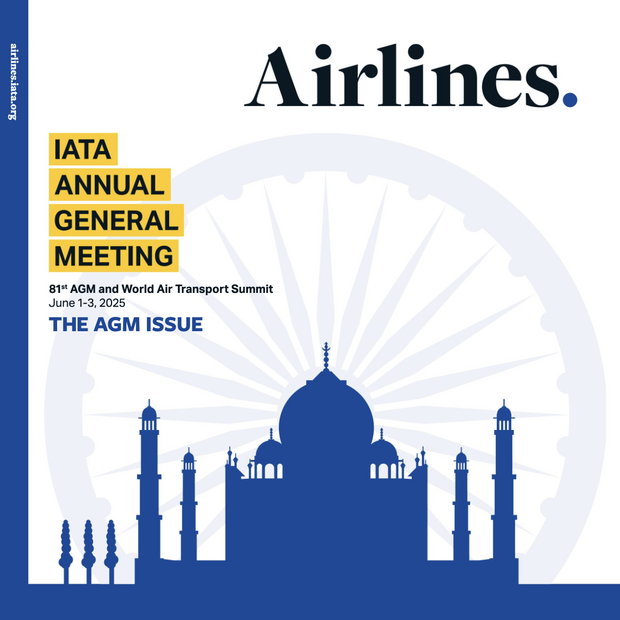
Translations:
国际航协:航空货运需求下降 (pdf)
Diminution du fret aérien conforme aux prévisions (pdf)
قطاع الشحن الجوي يلبي التوقعات ويشهد انخفاضاً في الطلب (pdf)
El sector de carga aérea cae en consonancia con las expectativas (pdf)
Geneva- The International Air Transport Association (IATA) released April 2022 data for global air cargo markets showing a drop in demand and contraction in capacity. The effects of Omicron in Asia and the Russia–Ukraine war continue to create a challenging operating backdrop that is driving the decline.
Note: We returned to year-on-year traffic comparisons, instead of comparisons with the 2019 period, unless otherwise noted.
- Global demand, measured in cargo tonne-kilometers (CTKs*), fell 11.2% compared to April 2021(-10.6% for international operations). Global demand is down 1% compared to April 2019.
- Capacity was 2% below 2021 (+1.2% for international operations). Both global capacity and international capacity decreased slightly in April compared to March. Asia experienced the largest falls in capacity.
- Key factors in the operating environment should be noted:
- The war in Ukraine led to a fall in cargo capacity used to serve Europe as several airlines based in Russia and Ukraine were key cargo players. And the zero-COVID policy in China led to capacity challenges due to flight cancellations because of labor shortages.
- New export orders, a leading indicator of cargo demand and world trade are now shrinking in all markets except the US. Global goods trade has continued to decline in 2022, with China’s economy growing more slowly because of COVID-19 related lockdowns (among other factors). The lockdowns have brought much of the world’s largest port, Shanghai, to a standstill. Supply chain disruptions due to the Ukraine-Russia conflict are also adding to the downward pressure on trade.
“Air cargo demand fell by 11.2% in April and capacity contracted 2% compared to April 2021. The combination of the war in Ukraine and COVID-19 lockdowns in China have pushed up energy costs, intensified supply chain disruptions, and fed inflation. The operating environment is challenging for all businesses, including air cargo. But with China easing lockdown restrictions, there is cause for some optimism and the supply/demand imbalance is keeping yields high,” said Willie Walsh, IATA’s Director General.
April Regional Performance
Asia-Pacific airlines saw their air cargo volumes decrease by 15.8% in April 2022 compared to the same month in 2021. This was the weakest performance of all regions and significantly slower than the previous month (-5.1%). Airlines in the region have been heavily impacted by lower trade and manufacturing activity due to Omicron-related lockdowns in China. Because of this, available capacity in the region fell 19.4% compared to April 2021, the largest drop of all regions.
North American carriers posted a 6.6% decrease in cargo volumes in April 2022 compared to April 2021. Demand in the Asia-North America market declined significantly, however, other key routes such as Europe – North America remain strong. Capacity was up 5.2% compared to April 2021. Several carriers in the region are set to receive delivery of freighters in 2022, which should help address pent-up demand on routes where it is needed.
European carriers saw a 14.4% decrease in cargo volumes in April 2022 compared to the same month in 2021. The Within Europe market fell significantly, down 24.6% month on month. This is attributable to the war in Ukraine. Labor shortages and lower manufacturing activity in Asia due to Omicron also affected volumes. Capacity fell 0.2% in April 2022 compared to April 2021.
Middle Eastern carriers experienced a 11.9% year-on-year decrease in cargo volumes in April. Significant benefits from traffic being redirected to avoid flying over Russia failed to materialize. This is likely due to persisting supply chain issues in Asia. Capacity was up 6% compared to April 2021.
Latin American carriers reported an increase of 40.9% in cargo volumes in April 2022 compared to the 2021 period. This was the strongest performance of all regions. Airlines in this region have shown optimism by introducing new services and capacity, and in some cases investing in additional aircraft for air cargo in the coming months. Capacity in April was up 67.8% compared to the same month in 2021.
African airlines saw cargo volumes decrease by 6.3% in April 2022 compared to April 2021. This was significantly slower than the growth recorded the previous month (3.1%). Capacity was 1.5% below April 2021 levels.
| Air Cargo Market Detail-april 2022 | World Share (% year on year) | CTK | ACTK | CLF(%-PT)2 | CLF(LEVEL)3 |
|---|---|---|---|---|---|
| Total Market | 100% | -11.2% | -2.0% | -5.3% | 51.6% |
| Africa | 1.9% | -6.3% | -1.5% | -2.5% | 49.0% |
| Asia Pacific | 32.5% | -15.8% | -19.4% | 2.7% | 63.1% |
| Europe | 22.9% | -14.4% | -0.2% | -9.6% | 57.8% |
| Latin America | 2.2% | 40.9% | 67.8% | -8.0% | 41.9% |
| Middle East | 13.4% | -11.9% | 6.0% | -10.2% | 50.4% |
| North America | 27.2% | -6.6% | 5.2% | -5.3% | 41.9% |
1) % of industry RPKs in 2021 2) Year-on-year in load factor 3) Load Factor Level
Access Air Freight Monthly Analysis (pdf)
For more information, please contact:
Corporate Communications
Tel: +41 22 770 2967
Email: corpcomms@iata.org
Notes for Editors:
- * Please note that as of January 2020 onwards, we have clarified the terminology of the Industry and Regional series from ‘Freight’ to ‘Cargo’, the corresponding metrics being FTK (changed to ‘CTK’), AFTK (changed to ‘ACTK’), and FLF (changed to ‘CLF’), in order to reflect that the series have been consisting of Cargo (Freight plus Mail) rather than Freight only. The data series themselves have not been changed.
- IATA (International Air Transport Association) represents some 290 airlines comprising 83% of global air traffic.
- You can follow us at twitter.com/iata for announcements, policy positions, and other useful industry information.
- Explanation of measurement terms:
- CTK: cargo tonne-kilometers measures actual cargo traffic
- ACTK: available cargo tonne-kilometers measures available total cargo capacity
- CLF: cargo load factor is % of ACTKs used
- IATA statistics cover international and domestic scheduled air cargo for IATA member and non-member airlines.
- Total cargo traffic market share by region of carriers in terms of CTK is: Asia-Pacific 32.4%, Europe 22.9%, North America 27.2%, Middle East 13.4%, Latin America 2.2%, and Africa 1.9%.

